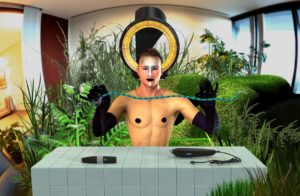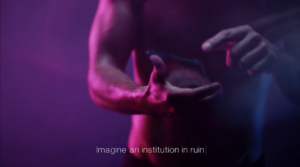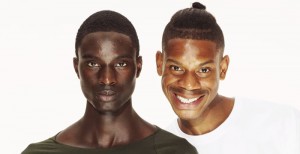There’s no nostalgia at the Berlin Biennale. Rather it’s an engagement with the aspects of the German capital, whose capital and touristic flows over the last 25 years have turned global. US art collective DIS was appointed in 2014 to curate the 9th edition of what is appropriately hashtagged as #BB9 in 2016. Titled ‘The Future in Drag’, founders Lauren Boyle, Solomon Chase, Marco Roso and David Toro left their New York residence to become tourists themselves, discovering the ins and outs of a city symbolic of convergent dualisms and histories.
Hence, the choice of venues extends beyond the main Biennial location at art institute KW, in emblematic Auguststraße to other key spots in Berlin, where paradoxical fractions of history flow and coexist. Akademie der Künste (AdK) at Pariser Platz, the European School of Management and Technology (ESMT), the Feuerle Collection and Blue Star sightseeing boat of Reederei Riedel and BB9’s own website were chosen by the DIS team due to the aesthetics of transparency of their architectures and their potential to attract accidental visitors.
Those transparencies are invaded and replicated by the presented works, imbued by visual marketing strategies and lifestyle-like gestures, which aim to make the visitors —as DIS co-founder Roso points out —“feel as if they were at a Grocery Store, forgetting they are at a Grocery Store”, or forget they’re at an art Biennial at all. Immaculate aesthetics take over, mimicking corporations, shopping malls and chain hotels, barely differentiating themselves from any actual advertising display, or any actual grocery store.
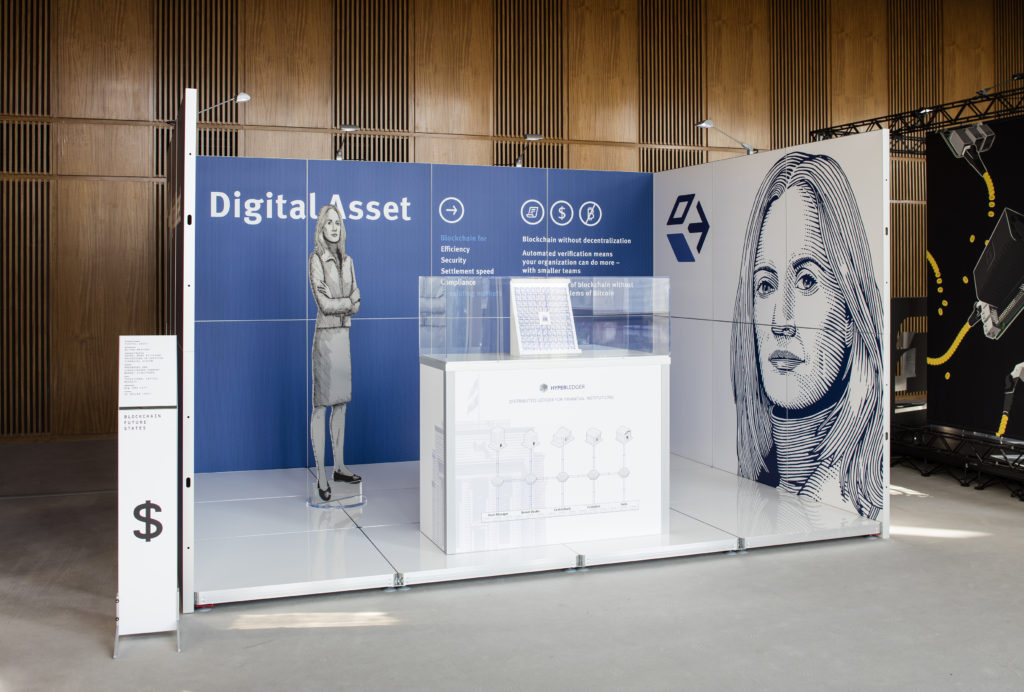
The dependence, fear and fascination towards technology, the internet’s capitalisation by artists, corporations and governments and its capacity to dissolve differences between production and consumption are a few premises for BB9. Some of the conversations held through the New Yorkers’ DIS magazine platform trigger links between disciplines and people, which materialise now as multiple contributions connected as tangible hyperlinks, as for instance in ‘LIT’: a commissioned set of advertising display-like light boxes are distributed through AdK’s building, depicting images by Dora Budor, Will Benedict and Kanye West-associated fashion brand Hood by Air among others.
Many of the participant artists adopt hybrid formats, inhabiting secondary spaces such as corridors, offices, toilets or the internet, through a set of site-specific installations and artworks in the form of brands or startup propositions. At AdK’s artist association’s building at Pariser Platz the works merge with the space’s architecture and furniture, becoming hard to distinguish from one another. Calla Henkel & Max Pitegoff’s top floor installation ‘Untitled (Interiors)’ (2016) explores the specificity of staged spaces and politics’ imagination through a series of framed photographs of the former United States Ambassador John Kornblum’s private home, hung on walls covered with mirror tiles. Anthropology and history feed the fictional speculative models of Simon Fujiwara’ s ‘The Happy Museum’ (2016), or Christopher Kulendran Thomas’ invitation to a flat-rate-based global citizenship ‘New Eelam’ (2016). Citizenship claims and global crisis are to be seen and heard in Halil Altindere’s ‘Homeland’ (2016) too: a rap video-clip alternating real refugee footage with fictional films. Anna Uddenberg’s hybrid hypersexualised female-suitcase figures expand through all the building floors. At the entrance, transgender, multi-sized mannequins dressed with New York fashion designer TELFAR’s t-shirt collection –available to buy as Berlin Biennale merchandising —greet the visitor.

An equally sleek, yet less corporate and more visceral angle is presented at KW, like Nicolas Fernandez’s oil painting ‘Everything needs its own absence’ (2014-2015) or Lucie Stahl’s untitled periscopic scans, which go beyond the art institution’s walls and give an insight into the building’s entrails through cylindrical holes starting from the picture. Capitalised affection and embodied quantification are enacted through Aleksandra Pirici’s ‘Signals’ (2016) —an ongoing group dance choreographed by ranking algorithms —and Alexa Karolinski & Ingo Nierman’s film ‘The Army of Love’ (2016). In the main hall, Cécile B. Evans’ astonishing installation, ‘What the heart wants’ (2016), appears like a parallel universe on a distorted cover version of the 1960s girl group The Shirelles’ ‘Will you still love me tomorrow’. Here, immortality and the entity of the self is defined by contemporary machinery.
Further propositions through dystopian futuristic staging take place at the once public GDR council now private elitist ESMT. Positivist mantras and crypto-currencies meet religious, sovereign and oligarchic forces in Simon Denny & Linda Kantchev’s display ‘Blockchain Visionaries’ (2016). In the next room, ‘Positive Pathways (+)’ (2016) presents a dystopian scenario created by Gulf art collective GCC’s, where a woman approaches her son in a tender gesture to bless him with a “quantum touch”, surrounded by a running track, symbolising Californian capitalist motivational drives. At the Feuerle Collection (a former telecommunications bunker) organic entities and progress icons merge through almost mystical interactions in Yngve Holen’s ‘Evil’s eyes’ (2016), Guan Xiao‘s technophilic sculptures and Josephine Pryde’s smartphones-holding-hands combo series.
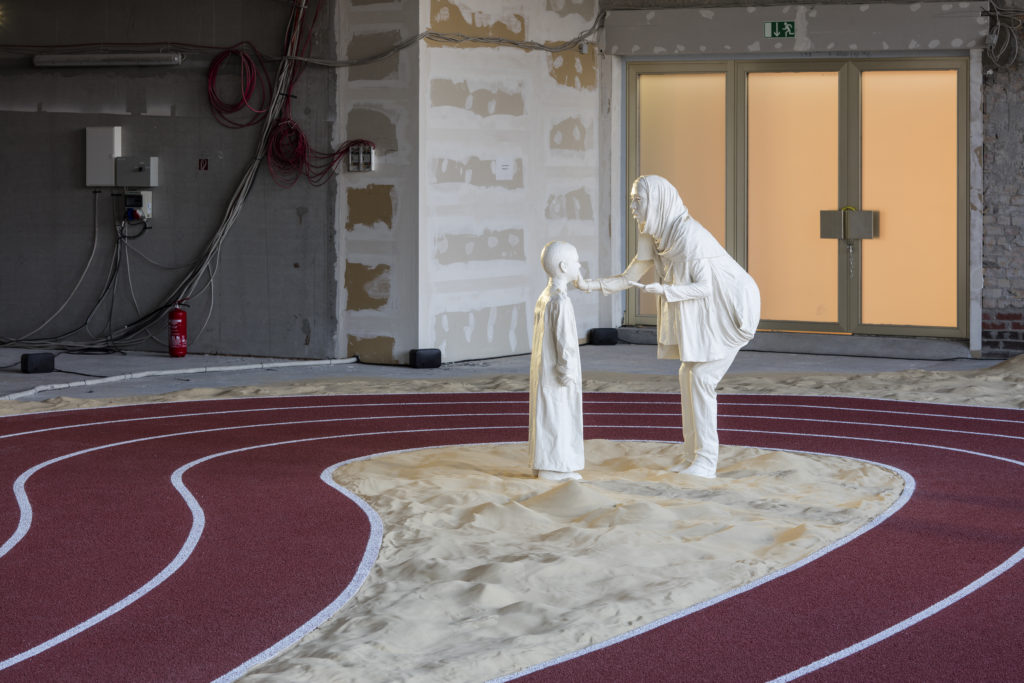
Peripheral elements of the Biennial hosted by the website include the essay compilation titled ‘Fear of Content’ —borrowing its name from the 2015 Rob Hornig essay of the same name —and Body Holes, a documentation of artworks exhibited inside actual human orifices by online exhibition platform New Scenario. The Berlin Biennale’s ‘Anthem’ is conceived as a soundtrack by eight artist-musicians collaborations produced by Total Freedom, Juliana Huxtable, Hito Steyerl and Fatima Al Qadiri among them. In addition to the online format, each soundtrack converted into a 12″ vinyl release, another art-commodity-in circulation format in order to perpetuate the Biennial’s aftermath.
‘The Present in Drag’ is a heterogeneous depiction of queer dystopian fictions and propositions, a contemporary that cannot be perceived outside of a constant sense of collapse, anxiety and uncertainty. It’s now disguised as the forthcoming, representing a specific global reality for the privileged and where some nuances and discursive drives are perhaps lost in a content pool ready to be consumed.**

